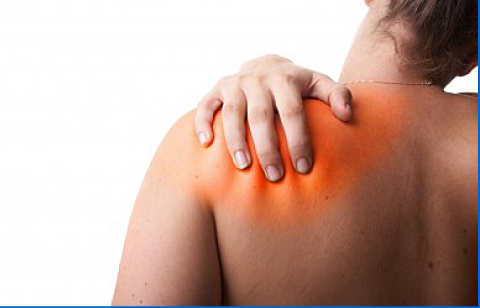| |
Shoulder Dislocation
The shoulder joint is a ball and socket joint. The shallow socket is deepened by a cartilage rim called the ‘Labrum’. The joint is held together and stabilised by a number of ligaments around it, which form the shoulder ‘capsule’. As a result of an injury which causes shoulder dislocation, the ball pops out of the socket (usually to the front of the shoulder) and damage either or both of these two structures.
Causes
The most common cause for shoulder dislocation is in a forceful insult event (impact or pull) on the joint. We see this frequently during sports (e.g. rugby tackle, hard blow) and various accidents (e.g. road traffic accident, fall at work). This type of dislocation is called a Traumatic Dislocation. It can cause the labrum to be torn from the socket making it shallow. This labral lesion is known as a Bankart’s lesion, and without proper treatment and healing, it can lead to further episodes of dislocation.Back...
Treatment
On the first dislocation, the shoulder will need to be reduced usually in the local Accident & Emergency department. The arm would be put into a sling for a period of time and then followed by a course of physiotherapy.
Some patients will go on to develop shoulder instability. This is when the patient experiences further episodes of dislocation or sense of insecurity in the injured shoulder. In this case, a referral to the specialist is advised. After the clinical assessment, the specialist may arrange some investigations to map out the underlying damaged structures in the shoulder. This can include CT or MR arthrogram scan.Back...
Surgery is the treatment of choice in patients with traumatic shoulder instability. The aim is to reconstruct the torn labrum or capsule. For the majority of Mr. Ayoub’s patients, he will perform the operation through keyhole surgery (Arthroscopic Shoulder Stabilisation). It is usually carried out as a Day-Surgery procedure. However some other patient, depending on the type of the damage, the operation will be performed by open procedure (i.e. cut open the shoulder). Other types of Shoulder Dislocation;
In addition to the “Traumatic Dislocation” mentioned above, there are other types of dislocation which affects a rather smaller percentage of patients. Atraumatic dislocation is a condition when the shoulder dislocates with minimal force (hence the name). This type usually associates with people that have ‘lax’ joints (i.e. “double-joint”. The mainstay treatment of this condition is a specialised physiotherapy course and rehabilitation programme aiming to regain the balance of muscles pulling around the shoulder (Shoulder Muscle Patterning). Occasionally, surgery is advised to these patients which can be performed either open or arthroscopic procedures. Back...
|
|



